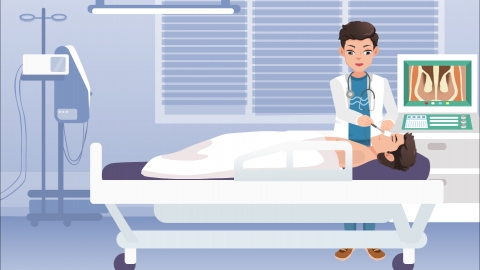How is early-stage rectal cancer surgically treated?
Surgical options for early-stage rectal cancer include endoscopic mucosal resection (EMR), endoscopic submucosal dissection (ESD), laparoscopic radical rectal surgery, robot-assisted laparoscopic radical rectal surgery, and open radical rectal surgery. The choice depends on factors such as tumor location and size. If symptoms like rectal bleeding or abdominal pain occur, prompt medical evaluation is recommended to establish a clear diagnosis.
1. Endoscopic Mucosal Resection (EMR): This procedure removes the affected mucosa and a small portion of the submucosal layer via an endoscope. It is minimally invasive with rapid recovery, suitable for small tumors with superficial invasion, and helps preserve normal bowel function.
2. Endoscopic Submucosal Dissection (ESD): This technique allows complete removal of the lesion by precisely peeling away the affected mucosa under endoscopic guidance. It enables a wider resection margin compared to EMR and is indicated for larger tumors or those with slightly deeper infiltration, provided the disease remains confined to the mucosal layer.

3. Laparoscopic Radical Rectal Surgery: This minimally invasive approach uses laparoscopic instruments to remove the tumor and perform lymph node dissection through small abdominal incisions. It causes less trauma, results in reduced postoperative pain, and allows faster recovery, making it a commonly used method for early-stage rectal cancer.
4. Robot-Assisted Laparoscopic Radical Rectal Surgery: Performed using a robotic surgical system, this technique offers higher precision and superior visualization, minimizing intraoperative damage. It is particularly beneficial for early-stage tumors located in low positions or in patients with complex pelvic anatomy.
5. Open Radical Rectal Surgery: This traditional approach involves a large abdominal incision to directly visualize and remove the tumor. It provides broad operative exposure and straightforward access, making it suitable for patients with large tumors, concurrent bowel obstruction, or those who are not candidates for minimally invasive procedures.
After surgery, patients should follow medical advice to gradually resume their diet—starting with liquids, progressing to semi-solid foods, and then transitioning to a regular diet. Spicy and hard foods should be avoided. Light physical activity, such as walking, is encouraged to stimulate bowel motility. Wound care is important to keep the surgical site clean and dry. Regular follow-up visits are essential to monitor recovery and detect any potential recurrence.






